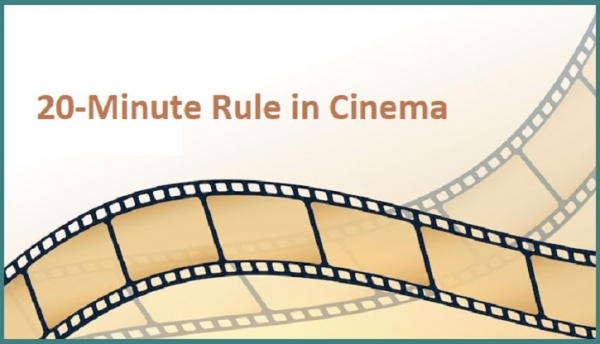By Sajeeb Sarker
20-Minute Rule in Cinema
Media School July 21, 2025

In the world of cinema, the 20-minute rule has multiple meanings. It can refer to different concepts depending on contexts like film structure, audience engagement, and even movie theater etiquette.
Let us have a look at what the 20-minute rule mean in different contexts of cinema:
1. Storytelling
In screenwriting and film structure, the 20-minute rule refers to the concept that the audience should have a clear understanding of the following matters within the first 20 minutes:
- Who the protagonist is
- Other vital characters
- What the main conflict or goal will be, and
- The stakes of the story
This part of the movie is often called the 'Inciting Incident' that is the event that sets the whole plot in motion.
If a film fails to hook its audience within the first 20 minutes of the narrative, viewers may lose their interest in it.
Examples:
1. In Megamind (2010), the protagonist evil genius Megamind, his do-gooder nemesis, and other major characters are introduced; the plot starts to unfold; and all of these within the first 20 minutes.
2. In The Matrix (1999), within the first 20 minutes, Neo has met Morpheus, and the mystery of the Matrix is introduced.
3. In Finding Nemo (2003), by this point, Nemo has been captured, and Marlin begins his journey to find him.
2. Audience Engagement
It is believed that many moviegoers follow an informal 20-minute rule when watching a movie:
- If they are not interested in the movie within the first 20 minutes, they stop watching (for home viewing) or mentally check out i.e. get distracted.
- Streaming services track viewer engagement, and if too many people stop watching around this time, it signals a weak opening act.
This is why filmmakers carefully structure the beginning of a film to capture the audience's attention quickly and effectively.
3. In Movie Theaters
In movie theaters, the 20-minute rule can refer to the time before the actual movie starts.
Many theaters show 20 minutes of trailers and ads before the film begins. Some moviegoers use this to their advantage, arriving 15-20 minutes late to skip previews.
However, this varies by theater, and some films.
4. The 20-Minute Rule for Late Arrivals
Some theaters have an unwritten 20-minute grace period for late arrivals. After this time, they may stop allowing people in to avoid disturbing other viewers.
This is especially common in:
- Film festivals where strict rules apply.
- Special screenings like premieres or limited showings.
Whatever the contest is, the first 20 minutes of a movie are critical, and it must be taken care of accordingly.


